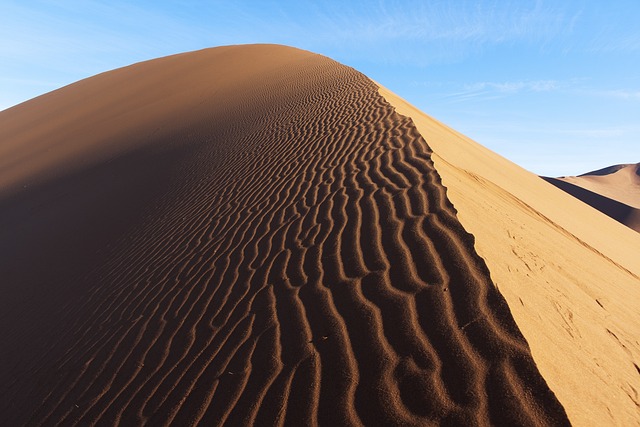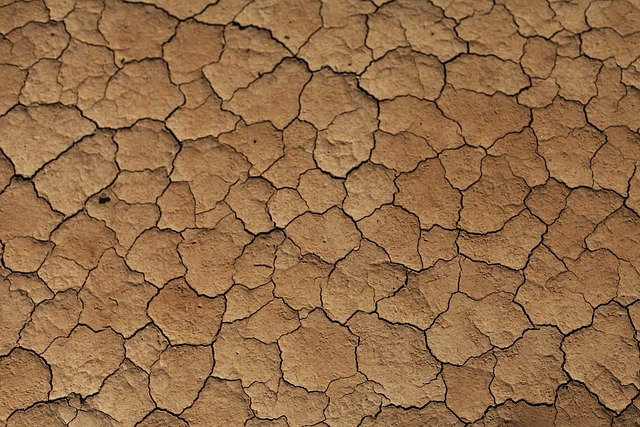The Global Desert Safari offers a sweet escape through the enchanting world of Arabian desserts, reflecting the region's rich cultural heritage and hospitality. Shaped by the arid climate, these iconic treats feature aromatic spices, rich textures, and vibrant flavors. Traditional dishes like halwa, basbousa, knafa, and um Ali coexist with modern twists, blending ancient techniques with global influences. Dates, figs, and herbs form the backbone of Arabian cuisine, while spices like saffron, cardamom, and sumac add depth. Presentation is key, transforming desserts into extraordinary culinary experiences. Modern chefs merge ancient recipes with contemporary techniques, ensuring classics remain cherished yet appealing to diverse palates globally.
“Embark on a sweet expedition across the Arabian Peninsula with our comprehensive guide to traditional Arabian cuisine deserts. From ‘Unveiling the Sweet Treats’ to ‘Modern Twists,’ we explore the rich culinary heritage that has captivated palates worldwide. Discover iconic desserts, ancient traditions, and unique ingredients that define this vibrant cuisine. Join us on a global desert safari and unlock the secrets behind some of the world’s most delectable sweets.”
- Unveiling the Sweet Treats: Iconic Arabian Desserts
- Global Desert Safari: A Culinary Journey Through Sand and Spice
- Historical Roots: Ancient Desert Cuisine Traditions
- Key Ingredients: What Makes Arabian Desserts Unique?
- Popular Delicacies From Different Arab Countries
- The Art of Presentation: Visual Appeal in Arabian Desserts
- Modern Twists: Keeping Traditional Desserts Alive
Unveiling the Sweet Treats: Iconic Arabian Desserts

Unveiling the Sweet Treats: Iconic Arabian Desserts
In the heart of a global desert safari, one can’t help but be captivated by the rich and diverse offerings of traditional Arabian cuisine, particularly its delectable desserts. These sweet treats are more than just indulgences; they are a reflection of the region’s cultural heritage and hospitality. From glistening halwa (sweet semolina puddings) to delicate basbousa (semolina-based candy), each dessert tells a story of ancient recipes passed down through generations.
The Arabian Peninsula’s arid climate has inspired unique cooking methods, preserving techniques, and ingredient choices that have led to these extraordinary desserts. Whether it’s the creamy knafa (philo pastry cheese bread) or the syrupy um Ali (layered rice pudding), every bite transports you to a world of aromatic spices, rich textures, and vibrant flavors, making a global desert safari incomplete without sampling these iconic treats.
Global Desert Safari: A Culinary Journey Through Sand and Spice

The Global Desert Safari is more than just a journey through arid landscapes; it’s a culinary exploration where ancient traditions meet modern palates. In the heart of Arabia, deserts have long been a source of inspiration for unique and flavorful dishes, developed to sustain travelers in the harsh conditions. Today, this rich culinary heritage is celebrated globally, inviting food enthusiasts on a gastronomic adventure.
From the sweeping dunes to the bustling markets, each region offers its own distinct taste. Spices like saffron, cardamom, and sumac, along with dates, figs, and aromatic herbs, are the cornerstones of Arabian cuisine. Dishes such as machboos (a rice-based meal), kabsa (rice pilaf), and mansaf (lamb cooked in yogurt and served over rice) reflect the diversity and resilience of desert communities. These traditional recipes have evolved to become a global desert safari, where chefs blend old techniques with modern twists, ensuring that the essence of Arabian cuisine remains intact while introducing it to a wider audience.
Historical Roots: Ancient Desert Cuisine Traditions

The historical roots of traditional Arabian cuisine deserts can be traced back to ancient times, shaped by the harsh yet captivating landscape of the desert. As a result of limited resources and extreme climates, early desert dwellers developed culinary practices that celebrated sustainability and ingenuity. Dates, for instance, have long been a staple food in the region, providing both energy and sweetness, and are integral to many traditional desserts like luqaimat (deep-fried date balls) and kunafa (a shredded wheat dessert with date syrup).
These ancient desert cuisine traditions have not only endured but evolved over centuries, influenced by trade routes and cultural exchanges. The global desert safari has brought together diverse culinary elements, creating a unique blend of flavors that reflect the region’s rich history and adaptability. Today, traditional Arabian desserts continue to captivate palates worldwide, with their distinct ingredients, intricate preparation methods, and nostalgic flavors reminiscent of desert life.
Key Ingredients: What Makes Arabian Desserts Unique?

Arabian desserts stand out in the global desert safari for their unique blend of sweet flavors and aromatic spices. Key ingredients like dates, a staple in the region due to its abundant cultivation, form the base for many traditional treats. These include well-loved dishes like umali (a date-based pudding) and khalwa (a rich date paste).
Beyond dates, Arabian cuisine incorporates various nuts, such as pistachios and almonds, along with creamy ingredients like heavy cream and ghee (clarified butter), contributing to the desserts’ decadent texture. The use of aromatic spices like cardamom, saffron, and rose water adds a subtle yet captivating essence, making each bite a sensory experience that reflects the rich culinary heritage of the Arabian Peninsula.
Popular Delicacies From Different Arab Countries

When exploring traditional Arabian cuisine, no discussion is complete without delving into their diverse and delectable deserts. From bustling markets in Morocco to the sprawling landscapes of Saudi Arabia, each Arab country offers its unique twist on sweet treats, making a global desert safari a culinary adventure. Imagine savouring the creamy richness of basma, a popular pudding made with saffron and rice, or indulging in kunafa, a crisp noodle-based treat topped with cream and walnuts—each bite transports you to a different corner of this rich cultural tapestry.
In Egypt, um ali is a beloved dessert featuring layers of bread soaked in syrup, while the United Arab Emirates is famous for its halwa, a sweet semolina pudding often flavoured with cardamom and rose water. These desserts not only satisfy sweet tooths but also offer insights into the history and traditions of their respective regions, making them must-try experiences for any food enthusiast embarking on a global desert safari.
The Art of Presentation: Visual Appeal in Arabian Desserts

In Arabian cuisine, the art of presentation is a captivating aspect that elevates the simple to the extraordinary, especially in desserts. When it comes to global desert safaris, the visual appeal of these treats is just as important as their taste, creating an immersive experience for diners. Each dessert is meticulously crafted to tell a story, with layers of delicate ingredients arranged in artistic patterns. The use of colorful syrups, creamy fillings, and textured toppings adds depth and allure, inviting guests to embark on a culinary journey through the Middle East.
From the moment these desserts are set before you, they transport you into a vibrant landscape, reminiscent of bustling markets and traditional gatherings. The presentation often reflects the rich cultural heritage, with intricate designs that echo ancient art forms. Whether it’s the famous Baklava, a symphony of flaky layers filled with nuts and sweetened syrup, or the creamy Om Ali, topped with a golden crust, every dessert is a work of art designed to delight not only the taste buds but also the eyes.
Modern Twists: Keeping Traditional Desserts Alive

In the modern era, as culinary trends evolve and fusion becomes increasingly popular, traditional Arabian cuisine, including its diverse range of desserts, is experiencing a delightful twist while staying true to its roots. The global desert safari has become more than just an exploration of exotic lands; it’s also a journey through flavors, where chefs blend ancient recipes with contemporary techniques. This evolution ensures that classic treats like baklava and luqaimat remain beloved, yet keeps them relevant for today’s palates.
By incorporating innovative ingredients and presentation styles, modern interpretations bring a fresh appeal to traditional Arabic desserts. For instance, chefs might use local spices in unique combinations or offer creative adaptations of classical dishes, making them accessible to a wider audience, especially those on a global desert safari. This fusion of the familiar and new helps keep these culinary treasures alive and thriving in today’s dynamic food scene.
Arabian cuisine has captivated taste buds worldwide, and its traditional desserts are a sweet testament to this culinary legacy. From ancient roots to modern adaptations, these dishes showcase the region’s rich cultural heritage. Whether it’s the global desert safari or a local gathering, Arabian sweets offer an immersive experience, blending unique ingredients and artistic presentation. As we’ve explored, from the iconic Kholood to innovative fusion creations, these desserts continue to dance on palates, ensuring that the ancient traditions of desert cuisine remain vibrant and ever-evolving.
